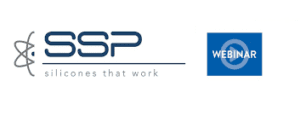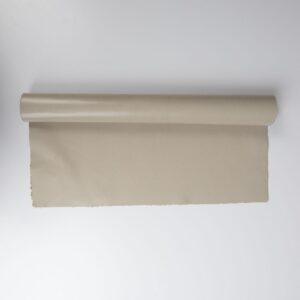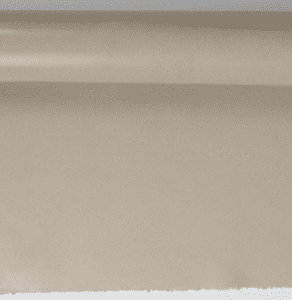EMI material types fall into two main functional categories: reflective (conductive) and absorptive (lossy). There are many specialized formulations depending on the environment, frequency range, and mechanical requirements. Methods of classification include composition, mechanism of action, and form factor, but engineers generally choose from among the following.
- Conductive elastomers
- Conductive foams and fabrics
- Metal-based materials
- Conductive coatings and paints
- EMI absorber materials
- EMI shielding tapes of films
- Hybrid or composite EMI materials.
SSP makes conductive elastomers, so contact us for more information or to request a quote.
Conductive Elastomers
Conductive elastomers are rubber materials, usually silicone or fluorosilicone, that are filled with conductive particles that create an electrically conductive network throughout the rubber. This type of EMI material provides both environmental sealing and EMI shielding by allowing current to flow across gasket joints and ground planes.
Common filler systems include:
- Silver-plated aluminum
- Silver-plated copper
- Silver-plated glass or nickel
- Nickel-coated graphite
- Carbon black or graphite
Typical applications range from EMI gaskets in military, aerospace, telecom, and medical devices to conductive seals for enclosures and connectors.
Conductive Foams and Fabrics
Conductive foams and fabrics are soft materials that are coated or impregnated with conductive metals like nickel, copper, or silver. The conductive surface forms a Faraday cage-like barrier to reflect or absorb EMI.
There are two main types of products:
- Conductive foam gaskets: Urethane or polyethylene foams laminated with copper/nickel fabric.
- Conductive fabrics: Woven or nonwoven textiles metallized for flexibility and shielding.
Typical applications for conductive foams and fabrics include EMI gasketing for consumer electronics, laptops, displays, and enclosures. They are also used with door and panel seals where repeated compression occurs. Among their advantages, conductive foams and fabrics are lightweight, flexible, have low compression force, and are suitable for high-frequency shielding.
Metal-Based EMI Materials
Metal-based materials are solid or mesh metals used as structural or surface shielding layers. The metals reflect and conduct electromagnetic waves, preventing penetration. Common metals for this type of EMI material include copper, aluminum, stainless steel, and Mu-metal (nickel–iron alloy for magnetic shielding).
Forms factors include foils and meshes, enclosures and housings, and braided wire or metal fingerstock gaskets. Typical applications range from equipment housings, cable shielding, and enclosure panels to magnetic shielding for transformers and sensors.
Conductive Coatings and Paints
Conductive coatings and paints are liquid coatings loaded with conductive particles. They are applied by spraying or brushing and create a thin conductive surface that reflects or dissipates electromagnetic energy. Common filler systems include silver, copper, nickel, or graphite. Water-based or solvent-based polymer carriers are used.
Conductive coatings and paints are used with plastic electronic housings, typically ABS or polycarbonate. They are also used to coat or paint the inside surfaces of consumer electronics or medical devices. Among their advantages, this type of EMI material is easy to apply to complex shapes and cost-effective for plastic enclosures.
EMI Absorber Materials
EMI absorber materials absorb rather than reflect EMI, converting electromagnetic energy into heat through dielectric or magnetic losses. This type of EMI material is used when reflection would cause interference or resonance inside enclosures.
Common EMI absorber materials include:
- Magnetic ferrite sheets or powders
- Carbon-loaded foams and elastomers
- Polymer composites with magnetic fillers (e.g., Mn–Zn ferrite, carbonyl iron)
Typical applications range from inside electronic enclosures to suppress internal noise to RFID shielding and near-field communication control to automotive radar absorption. Among its advantages, this type of EMI material reduces EMI resonance and crosstalk. It’s also lightweight and flexible.
EMI Shielding Tapes and Films
EMI shielding tapes and films are flexible materials with conductive adhesive and metal layers for quick shielding or grounding. They provide localized shielding by adhering conductive surfaces together and grounding stray currents.
Common materials include:
- Copper foil tape (with conductive adhesive)
- Aluminum foil tape
- Conductive fabric tape
Typical applications for EMI shielding tapes and films include cable shielding and grounding, the quick repair or enhancement of EMI seals, and temporary prototypes.
Hybrid or Composite EMI Materials
Hybrid or composite EMI materials are combinations of conductive and absorptive technologies that provide broadband shielding and environmental protection. Examples include:
- Conductive elastomers backed with ferrite absorbers
- Multi-layer composites (metal + foam + absorber)
- Fabric-over-foam gaskets with adhesive backing
Typical applications for a hybrid or composite EMI material include military electronics requiring multi-band performance and mixed-frequency environments (e.g., 5G and radar).
Which EMI Material Do You Need?
The table below summarizes what you’ve learned in this article.
Summary Table
Type | Base Material | Mechanism | Applications |
Conductive elastomers | Silicone, fluorosilicone | Conductive reflection | Gaskets, seals |
Conductive foams/fabrics | Urethane, textiles | Conductive reflection | Consumer electronics |
Metal-based | Copper, aluminum, mu-metal | Reflection/conduction | Enclosures, cables |
Conductive coatings | Polymer paint | Surface conduction | Plastic housings |
EMI absorbers | Ferrite, carbon composites | Energy absorption | Internal suppression |
Shielding tapes/films | Metal foils, conductive adhesives | Localized conduction | Cables, small enclosures |
Hybrid materials | Mixed composites | Reflection + absorption | Aerospace, defense |
For conductive elastomers, contact SSP.




